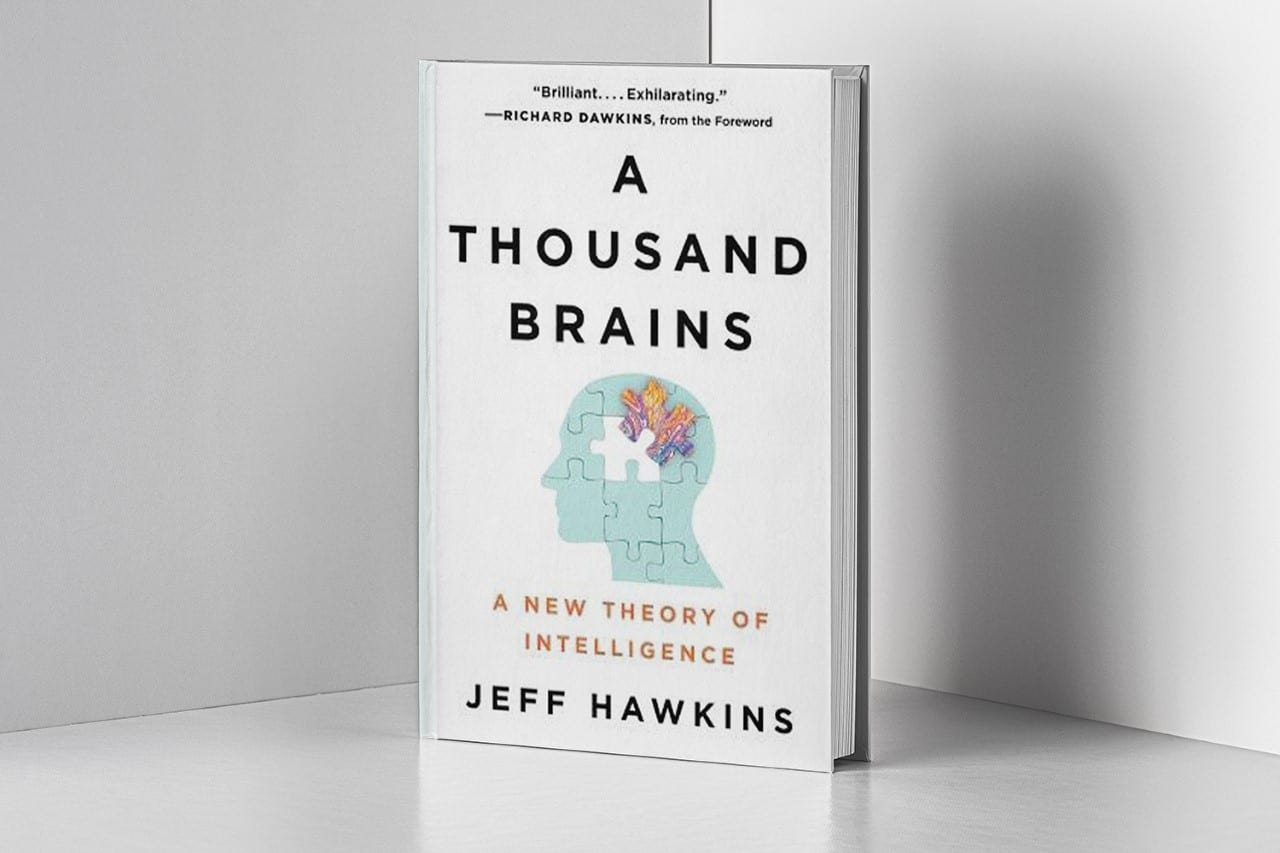Disclaimer: Writing this book review is a method for me to absorb the thinking presented in the book. Almost all elements and thoughts written below are taken from the book.
Jeff Hawkins wrote a book on how the brain works. He is a neuroscientist with a track record because he decided in anticipation of his research to found 'Palm Computing'. For the love of God, he created one of the most popular companies in the 90s as a side-quest.
The static concept of the brain
The brain uses a model of the world. The word "model" used to imply a static set of facts. But it is not static, through experience it learns a rich and complicated model of the world. Experience is important, not knowledge.
For many years, it was believed that the adult brain was fixed. Learning, it was believed, involved increasing or decreasing the strength of synapses. This is still how learning occurs in most artificial neural networks. But the only way for a brain to learn anything is via changes in its inputs. If the inputs to the brain were static, nothing could be learned. New synapses form and old ones disappear every day.
The memory palace technique
Thinking turns out to be a form of movement. Thinking occurs when neurons invoke location after location in a reference frame, bringing to mind what was stored in each location. All knowledge is stored at locations relative to reference frames.
This concept has fascinating implications for learning and education. Learning conceptual knowledge can be difficult. What reference frame can you use for concepts like democracy or maths? If I give you ten historical events related to democracy, how should you arrange them? Discovering a useful reference frame is the most difficult part of learning, even though most of the time we are not consciously aware of it.
You learn by combining existing reference frames. A new reference frame stores the links to reference frames of previously learned things. This is a bit like using hyperlinks in a text document.
A politician and a mathematician are not aware they are using reference frames to organise their knowledge. Just as you and I are not aware we use reference frames to understand smartphones. When asking for help, we should ask: "Can someone suggest a reference frame for organising these facts?". Being an expert in a subject matter is finding a good reference frame to arrange facts and observations.
Where is knowledge stored in the brain?
Knowledge in the brain is distributed. Nothing we know is stored in just one place. All models (reference frames) are constructed out of thousands of other models. This is why we call it the Thousand Brains Theory. Knowledge of any particular item is distributed among thousands of complementary models.
Your brain decides on what combination of models to use by voting. All reference models (cortical columns) share their list of possible solutions. Using determination and voting among models, the most likely model is chosen.
Source: numenta.com
AI doesn't possess knowledge
The author doesn't believe any kind of deep learning network will achieve the goal of Artificial Intelligence if the network doesn't model the world the way a brain does. Deep learnings work well, but not because they solve the knowledge representation problem. They work well because they bypass it completely, relying on statistics, predictions and lots of data instead.
Stacking a never-ending list of definitions and rules to represent knowledge is not an efficient attempt to represent knowledge. Your own brain learns via a model, not a list of facts and rules.
What is learning? And when is a machine intelligent?
learning continuously. Most AI systems today do not learn continuously. They go through lengthy training and when it is complete, they are deployed. This is not flexible. Flexibility requires continuously adjusting to changing conditions and new knowledge.
Learning via movement. We learn by moving. You cannot learn a model of a house without moving from room to room and you cannot learn a new app on your smartphone without interacting with it. (These movements don't have to be physical.)
Many models. You have to utilise many models and let them vote to discover new models.
Using reference frames to store knowledge. Thinking occurs as the brain activates one location at a time in a reference frame and the associated piece of knowledge is retrieved (memory palace)
Application of this knowledge
I was personally hoping the author would talk more about the connection between this approach and learning or education. How should the use of reference frameworks and especially learning by movement impact our teaching methods?
Edit: It turns out Numenta (the research organisation of the author) was wondering the same thing and published a series on the book in combination with pedagogy. I am going to read up on it.








